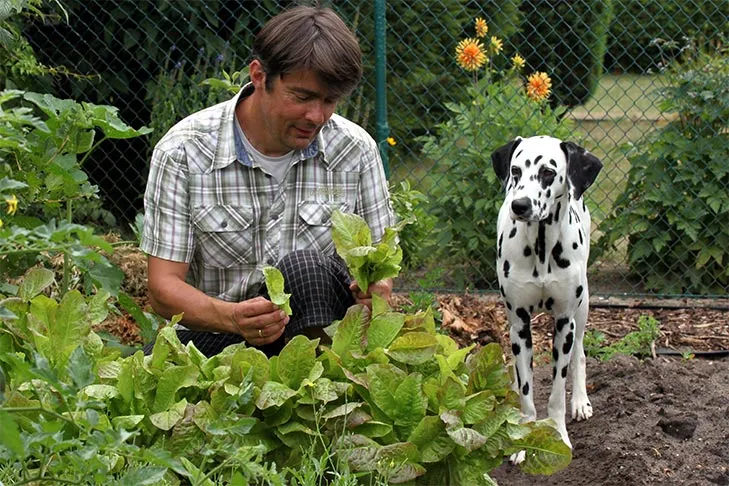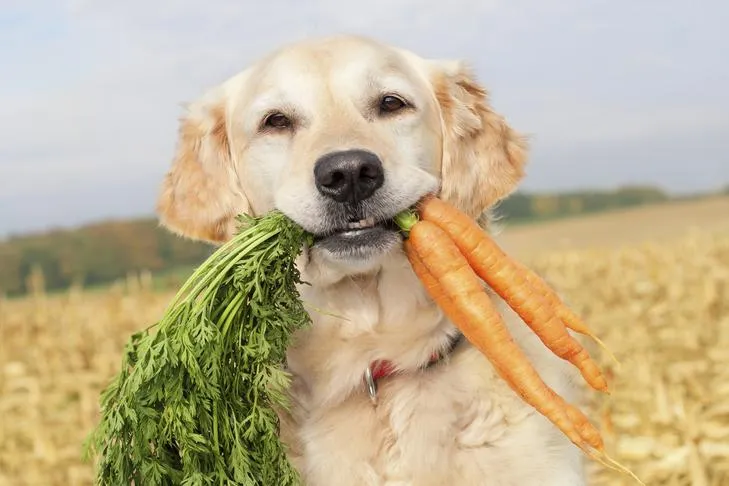It’s natural to want to share your favorite snacks with your beloved canine companion. After all, if a vegetable is healthy for you, it must be good for your dog, right? Unfortunately, this isn’t always the case. While many human foods, including certain fruits and vegetables, can be safe and even beneficial treats for dogs in moderation, others are downright dangerous or even toxic. Understanding What Veggies Are Not Good For Dogs is paramount for every responsible pet owner to prevent serious health issues.
Dogs digest foods differently than humans do, and certain compounds found in vegetables that are harmless to us can be highly toxic to them. In extreme cases, consuming the wrong vegetable can lead to long-term health problems, severe illness, or even death. This guide will delve into the vegetables you should always keep out of your dog’s reach, explain why they pose a threat, and provide essential advice for keeping your furry friend safe and healthy. For a broader look at human foods, including fruits and other vegetables, check out our comprehensive guide on what fruits and veggies are not good for dogs.
Why Certain Vegetables Pose a Risk to Your Dog
The canine digestive system is not identical to a human’s. While dogs are omnivores, their bodies process certain compounds differently, making some common vegetables harmful. These harmful effects can range from mild gastrointestinal upset to severe organ damage, red blood cell destruction, and even death. The danger often lies in specific compounds, such as thiosulphates in the Allium family or solanine in nightshade plants, which dogs cannot metabolize safely. It’s crucial for pet owners to be informed about these hidden dangers to prevent accidental poisoning.
Furthermore, some vegetables might not be directly toxic but can cause significant digestive distress due to their fibrous nature, difficulty in digestion, or high sugar content. Even seemingly innocuous parts, like seeds, pits, or rinds, can be choking hazards or contain toxic substances. Always err on the side of caution and consult your veterinarian before introducing any new human food into your dog’s diet.
Vegetables Dogs Must Avoid at All Costs
These vegetables are known to be highly toxic to dogs and should never be offered, not even in small amounts. Their consumption can lead to severe health complications requiring immediate veterinary attention.
Onions, Garlic, Leeks, and Chives (Allium Family)
The Allium family—which includes onions, garlic, leeks, and chives—is one of the most dangerous groups of vegetables for dogs. These plants contain compounds called thiosulphates, which cause oxidative damage to red blood cells, leading to a condition called hemolytic anemia. This means the red blood cells burst, reducing the dog’s ability to carry oxygen throughout their body. All forms of these vegetables are toxic: raw, cooked, dehydrated, or powdered. This includes onion powder often found in human processed foods.
Symptoms of Allium poisoning can include:
- Vomiting
- Diarrhea
- Lethargy and weakness
- Pale gums
- Increased heart rate
- Rapid breathing
- Abdominal pain
- Collapse
Symptoms may not appear immediately, sometimes taking several days to manifest after ingestion, making early detection difficult. Japanese breeds like Akitas and Shiba Inus are particularly susceptible to Allium toxicity, but all dogs are at risk. If you suspect your dog has ingested any amount of an Allium vegetable, contact your veterinarian immediately. It’s also important to be mindful of this when sharing any human food that might contain these ingredients, such as stews, sauces, or seasoned meats.
Wild Mushrooms
While certain mushrooms purchased from supermarkets might be considered safe for dogs (though offering no significant nutritional benefit), wild mushrooms are a definite and absolute no. Many species of wild mushrooms are highly toxic and can be deadly to dogs. The issue is that it’s often incredibly difficult, even for experts, to distinguish between poisonous and non-poisonous varieties. Even a small piece of a toxic mushroom can cause severe illness or death.
The effects of mushroom poisoning can vary greatly depending on the species ingested but can include:
- Vomiting and diarrhea
- Lethargy and weakness
- Abdominal pain
- Staggering or lack of coordination
- Jaundice (yellowing of skin/eyes)
- Excessive drooling
- Seizures
- Coma
If you have wild mushrooms growing in your yard, it is best to remove them regularly and ensure your dog does not have access to them. If you suspect your dog has eaten a wild mushroom, seek emergency veterinary care immediately. Time is critical in these situations.
Unripe Tomatoes (Green Parts of the Plant)
The ripened red flesh of a tomato is generally considered safe for dogs in small quantities. However, the green parts of the tomato plant—including the leaves, stems, and unripe green tomatoes—contain a toxic alkaloid called solanine. In large quantities, solanine can be harmful to dogs, causing gastrointestinal upset, lethargy, weakness, and loss of coordination.
While a dog would need to consume a significant amount of the green plant material to suffer severe toxicity, it’s safer to prevent access to tomato plants altogether, especially if you have a curious canine who likes to explore the garden. Stick to offering only the ripe, red flesh of a tomato, and always remove any green parts or stems. To learn more about what fruits your dog should avoid, you can read our dedicated article on what fruits not good for dogs.
Other Vegetables to Exercise Caution With or Avoid Due to Minimal Benefit
Some vegetables aren’t outright toxic but offer little to no benefit, or can cause issues if consumed improperly or in large amounts.
Asparagus
Asparagus isn’t toxic to dogs, but there’s really no good reason to feed it to them. Raw asparagus stalks are very tough and fibrous, making them difficult for dogs to chew and digest properly. By the time asparagus is cooked down enough to be soft for a dog to eat, it loses most of its already minimal nutritional value.
While a small, cooked piece won’t harm your dog, there are many other vegetables that offer far more nutritional benefits and are easier for dogs to enjoy. If you’re looking for healthy vegetable options, consider alternatives that truly contribute to your dog’s well-being.
Spinach
Spinach is a nutrient-dense leafy green for humans, and dogs can technically eat it in moderation. However, spinach is high in oxalic acid. While a small amount is unlikely to cause issues, large quantities of oxalic acid can interfere with the body’s ability to absorb calcium, potentially leading to kidney damage over time.
For most dogs, occasional, small servings of cooked spinach won’t be a problem. But if you’re looking for a regular green vegetable addition to your dog’s diet, other options may be better choices, especially for dogs with pre-existing kidney issues or those prone to bladder stones. Always consult your vet if you have concerns about feeding spinach to your dog.
 Dalmatian watching a man gardening and picking leaves.
Dalmatian watching a man gardening and picking leaves.
Broccoli and Brussels Sprouts (In Excess)
Broccoli and Brussels sprouts are safe for dogs to eat in small amounts and can provide vitamins and fiber. However, like many cruciferous vegetables, they contain isothiocyanates, which can cause mild to potentially severe gastric irritation and excessive gas in dogs, especially if given in large quantities.
Additionally, the tough stalks of broccoli can pose a choking hazard or cause intestinal obstruction if not cut into very small, bite-sized pieces. It’s generally best to offer these vegetables cooked and in small, infrequent servings as an occasional treat rather than a dietary staple. If your dog experiences significant gas or stomach upset, it’s best to avoid them.
Safe and Healthy Vegetables for Dogs (Brief Overview)
While our focus is on what to avoid, it’s also helpful to know which vegetables are generally safe and can be a healthy addition to your dog’s diet when prepared correctly and offered in moderation. These can be great low-calorie, nutrient-rich treats. For a more detailed look at safe options, explore our articles on what vegetables can i give my dog and what other vegetables are good for dogs.
- Carrots: Excellent low-calorie snack, high in fiber and beta-carotene (Vitamin A). Great for dental health.
- Green Beans: All types (chopped, steamed, raw, or canned – plain, no salt added) are safe and full of vitamins, minerals, and fiber.
- Pumpkin: Pure pumpkin puree (not pie filling) is fantastic for digestive health, helping with both diarrhea and constipation. It’s rich in antioxidants.
- Celery: Contains vitamins A, B, and C, promotes heart health, and can even help freshen doggy breath.
- Peas: Green peas, snow peas, sugar snap peas, and garden peas are safe. They provide vitamins, minerals, protein, and fiber (avoid canned peas with added sodium).
- Cucumbers: Mostly water, low in calories, and full of vitamins K, C, and B1. Great for overweight dogs or as a hydrating treat.
Always introduce new vegetables slowly and in small amounts to monitor for any adverse reactions.
 Golden Retriever holding carrots.
Golden Retriever holding carrots.
Understanding Canine Digestion and Food Safety
A dog’s digestive system is fundamentally designed to process animal proteins and fats. While they can derive some nutrients from plant matter, their ability to break down and utilize certain complex plant compounds, fiber, or natural toxins differs significantly from humans. This is why a simple vegetable for us can be a serious threat to them.
Many issues arise because dogs lack certain enzymes or metabolic pathways that humans possess, making them unable to neutralize potentially harmful substances. For instance, the thiosulphates in onions are converted into reactive oxygen species in a dog’s bloodstream, which then damage red blood cells. In contrast, humans have mechanisms to process these compounds without harm.
It’s also important to remember that portion size matters. A tiny amount of a problematic vegetable might cause mild upset, while a larger quantity could be lethal. This underscores the importance of strict portion control for any human food you share and complete avoidance of toxic items. Always consider your dog’s size, age, and individual sensitivities. A small puppy or an older dog with a compromised immune system might react more severely than a healthy adult dog. When in doubt, it’s always best to err on the side of caution and consult your veterinarian. They can provide personalized advice based on your dog’s specific health needs and history.
What to Do If Your Dog Eats a Harmful Vegetable
Accidents happen, and despite our best efforts, dogs can sometimes get into foods they shouldn’t. If you suspect your dog has ingested a vegetable known to be toxic, immediate action is crucial.
Here’s what to do:
- Stay Calm: Panicking will not help your dog. Try to remain composed so you can think clearly.
- Identify the Vegetable and Quantity: If possible, determine exactly what your dog ate, how much of it, and approximately when they ate it. This information is vital for your veterinarian. If it was a wild mushroom, try to safely collect a sample for identification by your vet, but do not risk touching potentially dangerous fungi with bare hands.
- Contact Your Veterinarian Immediately: Call your vet or an emergency veterinary clinic right away. Do not wait for symptoms to appear. Early intervention can significantly improve your dog’s prognosis. Be honest and provide all the details you have.
- Do Not Induce Vomiting Unless Directed: Never try to make your dog vomit without explicit instructions from a veterinary professional. Inducing vomiting inappropriately can cause further harm, such as aspiration pneumonia or damage to the esophagus, especially with certain toxins.
- Monitor Your Dog: While en route to the vet or awaiting their advice, observe your dog closely for any symptoms, such as vomiting, diarrhea, lethargy, weakness, difficulty breathing, or seizures. Report any changes to the vet.
Having the contact information for your regular veterinarian and the nearest emergency veterinary hospital readily available is a critical part of being a responsible pet owner. Being prepared can save your dog’s life in a food-related emergency. For a general overview of safe and unsafe human foods, refer to our guide on what human food is healthy for dogs.
Prevention and Best Practices
Preventing your dog from accessing harmful vegetables is the best defense against toxicity. Here are some practical tips:
- Secure Food Storage: Always store vegetables, especially those known to be toxic, in dog-proof containers or in locations your dog cannot reach, such as high shelves or locked pantries.
- Dog-Proof Trash Cans: Invest in trash cans with secure lids that your dog cannot open, or place them inside a cabinet. Discarded peels, stalks, and leftover human meals can contain harmful ingredients.
- Educate Family Members: Ensure everyone in the household, including children and guests, understands which foods are off-limits for your dog. A simple “no human food for the dog unless specifically approved” rule is often the easiest to follow.
- Supervise Outdoor Time: If you have a garden or walk your dog in areas where wild plants (like mushrooms) grow, supervise them closely to prevent them from foraging.
- Read Labels: When offering any processed human food (which is generally discouraged), always read ingredient labels carefully to ensure there are no hidden toxic ingredients like onion powder or garlic powder.
- Designated Dog Treats: Stick to commercially prepared dog treats and dog food as the primary source of snacks and nutrition. These products are formulated to be safe and nutritionally balanced for canines.
 Rottweiler laying down in the yard, its head tilted.
Rottweiler laying down in the yard, its head tilted.
Conclusion
The joy of sharing a meal with your canine companion is undeniable, but it comes with the vital responsibility of knowing what is safe and what veggies are not good for dogs. While a wide array of human foods can be healthy and delicious treats, the vegetables in the Allium family (onions, garlic, leeks, chives), wild mushrooms, and the green parts of tomato plants pose significant risks and should always be avoided. Other vegetables like asparagus and spinach require caution and moderation, offering little benefit in return for potential mild issues.
Prioritizing your dog’s health means being informed and proactive. Always research any new food before offering it to your dog, consult your veterinarian for personalized dietary advice, and ensure a safe home environment free from accessible toxic foods. By understanding these guidelines, you can ensure your furry friend enjoys a long, healthy, and happy life free from preventable food-related hazards. Your dog relies on you to make the right choices for their well-being.
References
- American Kennel Club. (n.d.). Human Foods Dogs Can and Can’t Eat. Retrieved from https://www.akc.org/expert-advice/nutrition/human-foods-dogs-can-and-cant-eat/
- ASPCA. (n.d.). Toxic and Non-Toxic Plants List. Retrieved from https://www.aspca.org/pet-care/animal-poison-control/toxic-and-non-toxic-plants
- Pet Poison Helpline. (n.d.). Garlic & Onion Poisoning in Pets. Retrieved from https://www.petpoisonhelpline.com/poison/garlic/
- Pet Poison Helpline. (n.d.). Mushroom Poisoning. Retrieved from https://www.petpoisonheline.com/poison/mushroom/
